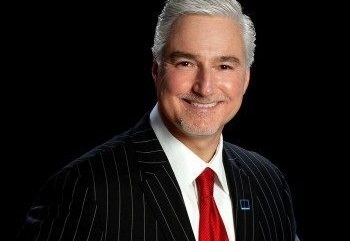In today’s economic climate, trying to plan for retirement can be difficult. Whether it’s an IRA, 401(k), or other savings accounts, knowing what to do from year to year is often a complex process, thanks to the many changes that usually take place on a regular basis. As 2018 begins, those trying to make sure their retirement savings will reach their full potential once again find themselves trying to figure out what to do next. However, thanks to financial planning expert David Giertz, understanding the process is now much easier.
401(k) Contributions
If you’ve got a 401(k) retirement account, you’ll be glad to know yearly contribution limits are being increased. Workers can contribute up to $18,500 per year to their account, which will help create a nice nest egg. And if you’re age 50 or older and looking to make what are known as catch-up contributions, you’ll be able to contribute an additional $6,000 per year as well, for a grand total of $24,500 annually. And according to David Giertz, this is an opportunity that’s simply too good to pass up.
New post up on On Mogul https://t.co/VwMKmG1gJI
— David Giertz (@david_giertz) December 14, 2017
IRA Deductions
If you have access to a 401(k) account, you’ll need to pay particular attention to the contributions you may be making to your IRA. In 2018, you may not be able to deduct these contributions from your taxable income. This is due to the IRA deductions phasing out over a certain income range, and disappearing altogether beyond that range. According to David Giertz, single and head-of-household taxpayers will have a phaseout range of $63,000-$73,000 in 2018, while married-filing-jointly taxpayers will have a phaseout range of $101,000-$121,000 if the contributing spouse is the one covered by the plan. If that is not the case, and the contributing spouse is not the one covered by the plan, the range will be $189,000-$199,000. And for those couples who choose the married-filing-separately option, the range is $0-$10,000.
Roth IRA Income Limits
For those who have a Roth IRA, David Giertz suggests you pay particular attention to the changes coming in 2018. Based on the new rules, if your yearly income exceeds a certain limit, you won’t be able to contribute to the Roth IRA. However, the good news is that the contribution limits are going up slightly in 2018. For 2018 taxpayers who file as single or head-of-household, the phaseout income range will be $120,000-$135,000. And for couples choosing the married-filing-jointly or married-filing-separately options, the phaseout ranges are the same as for the traditional IRA.
HSA Contribution Limits
In more and more workplaces Health Savings Accounts, better known as HSAs, are gaining in popularity. But the majority of employees don’t view an HSA as a standard retirement account. So David Giertz suggests they start to think otherwise. As a Certified Business Coach , David knows all too well how people often overlook many great options. Because of this, he strongly believes employees should take a much closer look at the contributions they can make to an HSA.
For starters, contributions to these accounts are tax-deductible, and the money in the account is not subject to capital-gains and dividend taxes. And along with this, the money taken from the account is tax-free if spent on qualifying medical expenses. When you turn 65, you can use the money in these accounts for anything. All without incurring a tax penalty. For 2018, the contribution limits for these accounts are increasing. Self-only employees will be able to contribute $3,450 per year. But family coverage HSAs can have contributions up to $6,900.
Saver’s Credit Income Limits
A tax credit for those who make contributions to retirement accounts, the Saver’s Credit is something David is very excited about. To qualify for this, a person needs to be below certain income limits for the year. However, for 2018, those limits have slightly increased. For married-filing-jointly taxpayers, the income limit will now be $63,000, while heads of households will have a limit of $47,250. And finally, if you’re filing as single or married-filing-separately, your income limit is $31,500.
Drawing on 30 years of experience in the financial planning industry, David firmly believes many of these changes will greatly benefit most. Those who are working hard to plan well for their retirement. David knows careful planning creates a retirement plan that will let people enjoy the lifestyle they want. According to David, those who take heed of these changes will definitely reap the rewards in the years ahead.




